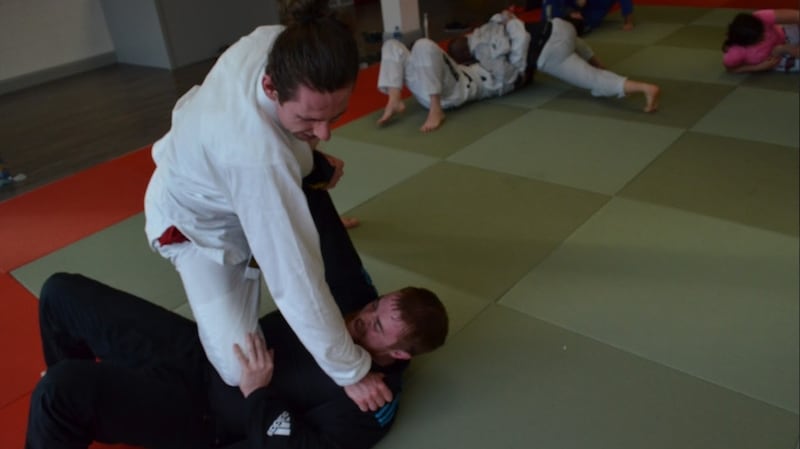At a young age, I was diagnosed with dyspraxia, a form of developmental co-ordination disorder (DCD). It affects about 10 per cent of the population, mainly boys. Dyspraxia mainly affects co-ordination, hence it’s former, less than flattering name, “clumsy child syndrome”. A person suffering from dyspraxia may have trouble with balance, timing, and differentiating left from right.
Growing up with dyspraxia means watching your friends take to new physical activities and develop their fine motor skills more naturally than you. This is an isolating experience that can have a crippling effect on a child’s developing self-confidence. I was lucky to receive a diagnosis, dyspraxia is an invisible and under-diagnosed condition. Many children, especially those from lower-income households, can go their entire lives without a diagnosis or explanation for why they struggle in ways that others don’t.
The differences between my peers and I was most visible on the playground. Kicking a football usually sent it feebly trundling off in a random direction, throwing a ball into a basketball hoop was a feat on par with a lunar landing, and hurling, well, the less said about that the better. These struggles led to me seeing myself as unathletic and unable to compete on a physical level.
Physical inferiority
As I grew up, this feeling of physical inferiority was constantly reinforced. While working in retail I struggled to stock shelves fast enough for my managers, I was unable to operate a till under pressure, and after work socialising was often marred by my dance style, which seemed to draw a lot of inspiration from a step ladder falling down a flight of stairs.
In college I experimented with sports and societies but nothing really clicked and I’d come away with that familiar feeling of awkward self-consciousness. Ultimately, I decided that competitive physical sports were beyond me. Thankfully, I wasn’t especially resolute in this, and I eventually decided to try Brazilian jiu-jitsu (BJJ).
BJJ is enjoying a surge in popularity thanks to the mainstream success of MMA where it makes up the majority of ground fighting, and the testimonies of famous practitioners like podcaster Joe Rogan and actor Keaunu Reeves. However, its origins go back as far as 1915, when jiu-jitsu master Mitsuyo Maeda arrived in Brazil and met Carlos Gracie. He and his family have mastered Maeda's teachings and went on to establish BJJ as we know it today.

BJJ is built around takedowns and groundwork. This allows a fighter to take down a much larger opponent. As a 6ft 4in man who is routinely tapped out by smaller opponents, I can confirm that it certainly works. It’s a physically and mentally demanding sport that develops fitness, strength, and problem-solving abilities.
At first, I found the emphasis on movement and technique intimidating: I was worried that I’d run into the same old issues I had with other sports. Over time, this emphasis is exactly what drew me in.
Many BJJ moves require a lot of training and repetition to reliably use during rolls (BJJ’s version of sparring). This forced me to consider how my body moves in a radically new way. Now, rather than endlessly second-guessing my movements I pay attention to them, repeat them over and over and gradually they become fluid and intuitive.
BJJ has also taught me to have a new focus on my spatial awareness. Being mindful of where your body is in relation to your opponents is one of the most important aspects of the sport. Carelessly over-extending yourself is an open invitation for your opponent to put you in a triangle, armbar, or another unpleasant submission that serves as a great reminder of why positioning is important.
This emphasis on technique and movement over brute force and aggression is what I think is the root of an open and friendly culture. More experienced practitioners are always quick to offer encouragement and constructive advice.
Relax
They’re even willing to take the time to teach rookies entirely new techniques (often after they subject the rookies to said techniques, but that’s part of the learning process). This is because BJJ is a martial art where everyone is constantly learning. Everyone is a perpetual student and no one forgets what being a novice feels like. Despite my difficulties with co-ordination and movement, I’m in the same boat as everyone else. This collaborative, supportive culture means that I can relax, focus on practising my movements, and enjoy the sport.
I train with Team Torres, one of Ireland’s leading martial arts academies with gyms across the northeast on both sides of the Border. One thing I missed out on growing up with dyspraxia was the camaraderie of a team.
Recently, I earned my first stripe towards a blue belt. I was awarded it at the end of class when the team lines up to shake hands and thank each other for a good session. Admittedly, I did have trouble tying my belt so I could receive my stripe, my coach waved this away. “He may not know how to tie his belt but he is getting better at jiu-jitsu,” he said.
Despite my brief fumble with my belt, as everyone in the class applauded, I didn’t feel my customary feelings of clumsy awkwardness.
I felt capable, confident, and proud that, despite my dyspraxia, I was finally able to compete.










